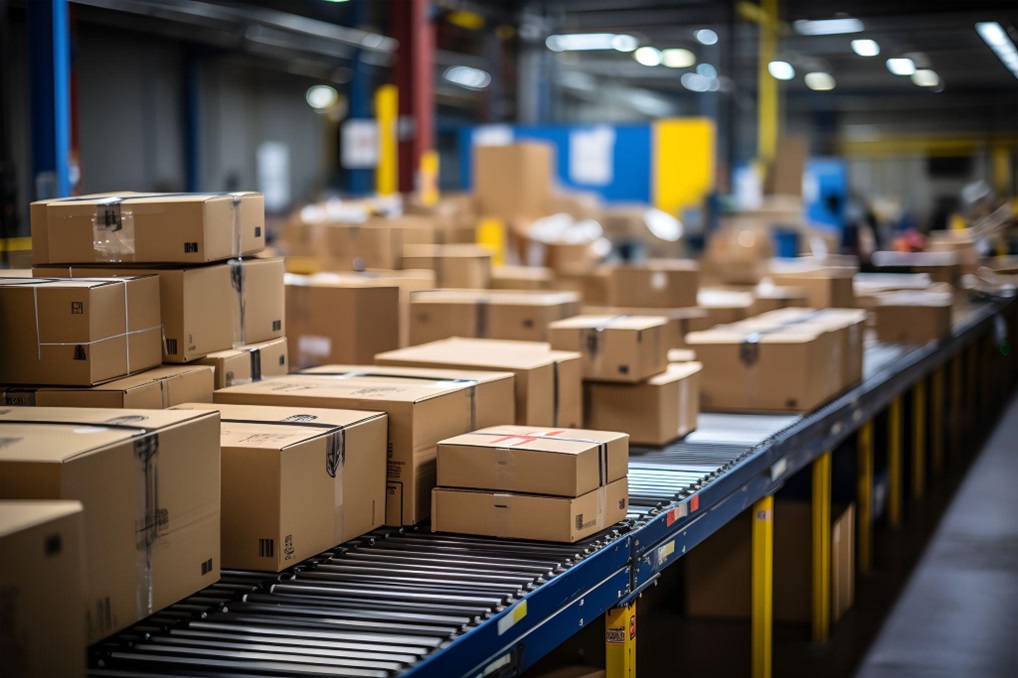Ecommerce Fulfillment: From Order Processing to Customer Retention
Ecommerce fulfillment encompasses the entire process from the moment a customer places an order to the final delivery and beyond. Each step requires meticulous planning and execution to ensure customer satisfaction, cost-efficiency, and regulatory compliance. This article delves into various facets of ecommerce order fulfillment, offering insights and practical solutions for enhancing your operations.

What is Ecommerce Fulfillment?
Ecommerce fulfillment is a critical aspect of the online retail industry. It involves the entire process from receiving an order to delivering it to the customer’s doorstep.
The process begins with storing products in a warehouse. From there, it includes picking items, packing them securely, and shipping them out.
A well-organized ecommerce fulfillment strategy is essential for maintaining customer satisfaction. Timely and accurate delivery is crucial to keeping customers happy and coming back for more.
This process can be managed in-house or outsourced to specialized fulfillment services. These services handle the logistics, allowing businesses to focus on other aspects of their operations.
Efficient ecommerce fulfillment not only enhances the customer experience but also contributes to the overall success and growth of an online business.
Why It Is Important for Businesses
- Critical Aspect of Online Retail: Ecommerce fulfillment is a critical aspect of the online retail industry.
- Comprehensive Process: It involves the entire process from receiving an order to delivering it to the customer’s doorstep.
- Warehouse Storage: Starts with storing products in a warehouse.
- Order Processing: Includes picking items, packing them securely, and shipping them out.
- Customer Satisfaction: A well-organized ecommerce fulfillment strategy is essential for maintaining customer satisfaction.
- Timely Delivery: Ensures timely and accurate delivery.
- In-House or Outsourced Management: Can be managed in-house or outsourced to specialized fulfillment services.
- Specialized Logistics: Specialized services handle logistics, allowing businesses to focus on other aspects of their operations.
- Enhanced Customer Experience: Efficient ecommerce fulfillment enhances the customer experience.
- Business Growth: Contributes to the overall success and growth of an online business.

Order Processing Techniques
Efficient order processing is crucial for the success of ecommerce businesses. It ensures that orders are handled swiftly, accurately, and cost-effectively, leading to increased customer satisfaction and loyalty. The backbone of this efficiency lies in leveraging automated order processing systems and optimizing the flow from order entry to delivery.
Automated Order Processing Systems
Automation is essential for managing large volumes of orders. Automated order processing systems integrate seamlessly with ecommerce platforms to streamline various tasks, such as order entry, inventory updates, and shipping label generation. These systems drastically reduce human errors, speed up processing times, and provide real-time updates, which are vital for maintaining customer trust and operational efficiency.
Benefits of Automated Order Processing:
- Increased Accuracy: Automated systems minimize the risk of human error in order fulfillment. By reducing mistakes in order entry, inventory management, and shipping, businesses can ensure that customers receive the correct products on time. This accuracy not only improves customer satisfaction but also reduces the costs associated with returns and corrections.
- Faster Processing: Automated systems can handle orders much more quickly than manual processes. From instant order confirmation to rapid inventory checks and shipping label generation, automation ensures that orders move swiftly through the fulfillment pipeline. This speed is crucial in meeting customer expectations for fast delivery.
- Cost Efficiency: By automating repetitive tasks, businesses can lower labor costs and reduce the need for manual intervention. This efficiency allows companies to allocate resources more effectively, focusing on growth and customer service rather than operational bottlenecks.
Streamlining Order Entry to Delivery Process
Optimizing the flow from order entry to delivery involves several critical steps, each contributing to a seamless order fulfillment process.
- Order Confirmation: Immediate acknowledgment of orders is essential to reassure customers that their purchase has been received and is being processed. This confirmation can be automated to provide instant feedback, enhancing customer satisfaction and trust.
- Inventory Allocation: Real-time inventory management systems are crucial for confirming product availability. These systems check stock levels as soon as an order is placed, ensuring that out-of-stock items are promptly flagged. This real-time check prevents overselling and backorders, maintaining customer confidence.
- Picking and Packing: Efficient picking and packing are pivotal in the order fulfillment process. Implementing technologies such as barcode scanning, automated sorting systems, and optimized picking routes can significantly enhance efficiency. These methods ensure that items are accurately selected and securely packed, ready for shipment.
- Shipping: Choosing the best shipping options involves balancing cost, speed, and reliability. Automated systems can compare various carriers and services, selecting the most appropriate option based on predefined criteria. This step ensures that customers receive their orders promptly and at a reasonable cost.
- Delivery Confirmation: Keeping customers informed about their order status and delivery details is critical for a positive customer experience. Automated notifications can provide real-time updates on order status, shipping progress, and expected delivery times, reducing customer inquiries and enhancing satisfaction.
PRO TIP: Implement automated order processing systems to boost accuracy, speed, and cost-efficiency from order entry to delivery.

Inventory Management
Effective inventory management is essential for ensuring that ecommerce businesses have the right products available at the right time, balancing between overstocking and stockouts. By utilizing various techniques and strategies, businesses can maintain optimal inventory levels, streamline ecommerce order fulfillment processes, and enhance customer satisfaction.
How to Manage Inventory for Efficient Fulfillment
- ABC Analysis: This technique involves categorizing inventory into three classes based on importance and value.
-
- Category A: High-value items with low sales frequency. These products require tight control and accurate demand forecasting.
- Category B: Moderate-value items with moderate sales frequency. These products need regular monitoring and balanced management.
- Category C: Low-value items with high sales frequency. These products can be managed with simpler controls and less frequent monitoring.
-
2. Safety Stock: Maintaining a buffer stock, or safety stock, is crucial to prevent stockouts during unforeseen demand spikes or supply chain disruptions. Safety stock acts as a cushion, ensuring that there are always enough products to meet customer needs, even when demand exceeds expectations or supply delays occur.
-
3. Inventory Audits: Regular inventory audits are essential to maintain accuracy in stock levels. These audits can be physical counts, cycle counts, or spot checks, ensuring that the recorded inventory matches the actual stock on hand. Accurate inventory records help prevent discrepancies that could lead to stockouts or overstock situations, thereby improving overall inventory management
efficiency.
Using Just-in-Time Inventory in Ecommerce
Just-in-Time (JIT) inventory is a strategy that minimizes holding costs by receiving goods only as they are needed for production or sales. This method aligns inventory levels closely with actual demand, reducing storage costs and minimizing waste.
Benefits of JIT Inventory:
- Reduced Holding Costs: By minimizing the amount of inventory held at any given time, businesses can significantly reduce storage costs. This approach frees up capital that can be invested in other areas of the business.
- Minimized Waste: JIT reduces the risk of inventory obsolescence and spoilage, especially for perishable goods or items with a short lifecycle. By only stocking what is needed, businesses can avoid the costs associated with excess inventory.
- Enhanced Efficiency: JIT encourages a more streamlined and efficient inventory system, where goods flow smoothly from suppliers to customers without significant delays.
Challenges and Requirements:
- Accurate Demand Forecasting: JIT requires precise demand forecasting to ensure that the right amount of inventory is ordered and received at the right time. Inaccurate forecasts can lead to stockouts or over-reliance on suppliers.
- Strong Supplier Relationships: Successful JIT implementation depends on reliable suppliers who can deliver goods promptly and consistently. Strong relationships and effective communication with suppliers are critical to ensure that inventory arrives exactly when needed.
PRO TIP: Use ABC analysis and JIT inventory to optimize stock levels, reduce costs, and enhance ecommerce fulfillment efficiency.

Ecommerce Order Fulfillment Strategies
In-House Fulfillment
Control Over Operations: Managing fulfillment in-house allows businesses to maintain complete control over the entire process, from inventory management to shipping.
Customizable Processes: In-house fulfillment enables the creation of customized processes tailored to specific business needs and customer preferences.
Direct Customer Interaction: Direct handling of orders and returns can enhance the customer experience through personalized service and faster issue resolution.
Outsourced Fulfillment
Expertise and Efficiency: Partnering with a third-party logistics provider (3PL) leverages their expertise in handling large volumes of orders efficiently.
Scalability: Outsourced fulfillment services can easily scale operations to match business growth and seasonal demand spikes.
Cost Savings: Outsourcing can reduce costs associated with warehousing, staffing, and equipment, allowing businesses to allocate resources more effectively.
Dropshipping
No Inventory Management: Dropshipping eliminates the need for businesses to manage inventory, as products are shipped directly from the supplier to the customer.
Lower Upfront Costs: This model reduces initial investment and financial risk since there is no need to purchase inventory in advance.
Wide Product Range: Businesses can offer a broader range of products without the constraints of physical storage space.
Hybrid Fulfillment
Flexibility: Combining in-house and outsourced fulfillment provides flexibility to optimize operations based on specific needs, such as handling high-value items in-house and outsourcing bulk products.
Risk Mitigation: Diversifying fulfillment methods can mitigate risks associated with relying solely on one approach, ensuring continuity during disruptions.
Improved Customer Service: A hybrid model can enhance customer service by leveraging the strengths of both in-house control and outsourced efficiency.
Just-In-Time Fulfillment
Reduced Inventory Costs: Just-in-time (JIT) fulfillment minimizes inventory holding costs by aligning production and delivery schedules closely with demand.
Improved Cash Flow: By reducing the amount of capital tied up in inventory, businesses can improve cash flow and allocate resources to other areas.
Enhanced Responsiveness: JIT fulfillment allows businesses to quickly adapt to changes in demand, reducing the risk of overstocking or stockouts.
Automation and Technology Integration
Increased Efficiency: Implementing automation technologies, such as robotic picking systems and conveyor belts, streamlines fulfillment processes and reduces labor costs.
Accurate Order Processing: Technology integration, including barcode scanning and inventory management systems, enhances accuracy in order processing and tracking.
Data-Driven Decisions: Leveraging data analytics tools can provide insights into fulfillment performance, enabling businesses to make informed decisions and optimize operations.
Sustainable Fulfillment Practices
Eco-Friendly Packaging: Adopting sustainable packaging solutions, such as recyclable materials and minimalistic designs, can reduce environmental impact and appeal to eco-conscious consumers.
Optimized Shipping Routes: Implementing route optimization software can reduce fuel consumption and emissions by planning efficient delivery routes.
Green Warehousing: Investing in energy-efficient warehousing practices, such as solar power and LED lighting, supports sustainability goals and reduces operational costs.
Why 3PL is a Game-Changer for Ecommerce Businesses
Third-Party Logistics (3PL) providers offer comprehensive ecommerce fulfillment services, including warehousing, packing, and shipping. Utilizing 3PL can be transformative for ecommerce businesses due to several key advantages:
- Scalability: 3PL providers enable businesses to scale their operations quickly without the need for significant capital investment in warehousing and logistics. This scalability is particularly beneficial during peak seasons or periods of rapid growth.
- Expertise: 3PL companies bring specialized knowledge and expertise in logistics, helping businesses optimize their supply chain and improve delivery times.
- Cost Savings: By outsourcing logistics, businesses can reduce costs related to warehousing, staffing, and transportation. 3PL providers often have established relationships with carriers, enabling them to negotiate better shipping rates.

Warehousing
Warehousing in ecommerce goes beyond mere storage; it involves the strategic placement and management of inventory to streamline ecommerce order fulfillment processes and meet customer demands efficiently. By adopting innovative warehousing solutions, ecommerce businesses can optimize their operations, reduce costs, and improve service levels.
Innovative Warehousing Solutions for Ecommerce
Automated Storage and Retrieval Systems (AS/RS):
Automated Storage and Retrieval Systems (AS/RS) are advanced systems that use robotics and computer-controlled mechanisms to automatically place and retrieve items from storage locations. These systems significantly reduce labor costs by minimizing the need for manual handling. Additionally, AS/RS enhances accuracy in inventory management by ensuring precise placement and retrieval of items, which reduces errors and improves order fulfillment speed.
Smart Warehouses:
Smart warehouses utilize Internet of Things (IoT) devices and technologies to monitor and manage inventory in real-time. Sensors and RFID tags are deployed to track the movement and status of goods, providing accurate and up-to-date inventory information. This real-time visibility helps in optimizing stock levels, preventing stockouts and overstock situations, and ensuring timely replenishment. Smart warehouses also enable predictive maintenance of equipment and better space utilization, further enhancing efficiency.
Pop-Up Warehouses:
Pop-up warehouses are temporary storage facilities set up to handle seasonal demand spikes or short-term increases in order volume. These warehouses provide flexibility and scalability, allowing businesses to quickly respond to changing market conditions without committing to long-term leases or significant capital investment. Pop-up warehouses can be strategically located close to high-demand areas, reducing shipping times and costs during peak periods.
The Role of Inventory Management in Fulfillment
Effective inventory management within warehouses is crucial for ensuring products are easily accessible and accurately tracked. Proper inventory management involves organizing products in a way that maximizes space and efficiency, using techniques such as ABC analysis to prioritize the placement of high-demand items. By doing so, pick and pack times are reduced, which accelerates the fulfillment process.
Accurate inventory tracking is essential for minimizing errors in order fulfillment. Implementing systems such as barcode scanning and real-time inventory updates ensures that the inventory data is always current, reducing the risk of stock discrepancies. This accuracy helps in maintaining customer satisfaction by ensuring that orders are fulfilled correctly and on time.
Additionally, effective inventory management supports better decision-making regarding stock levels and reordering. By analyzing inventory data, businesses can forecast demand more accurately and adjust their stock levels accordingly, preventing both stockouts and overstock situations. This balance not only improves operational efficiency but also reduces holding costs and enhances profitability.
Packaging and Handling
Proper packaging and handling are crucial components of ecommerce fulfillment, ensuring that products arrive safely and in good condition to maintain customer satisfaction and reduce return rates. Focusing on eco-friendly packaging solutions and optimizing package handling techniques can significantly enhance the efficiency and sustainability of the fulfillment process.
Eco-Friendly Packaging Solutions
Sustainable packaging solutions are becoming increasingly important as consumers and businesses strive to reduce their environmental footprint. Implementing eco-friendly packaging not only helps the environment but also appeals to eco-conscious customers, enhancing brand reputation and loyalty.
Recycled Materials:
Using packaging made from recycled content helps reduce waste and the demand for virgin materials. Recycled cardboard, paper, and plastics can be used to create sturdy and protective packaging solutions that are both functional and sustainable. This approach minimizes the environmental impact and supports the recycling industry.
Biodegradable Packaging:
Biodegradable materials, such as plant-based plastics, cornstarch packaging, and paper, decompose naturally over time, reducing long-term waste. These materials are designed to break down in natural environments, minimizing pollution and landfill accumulation. Biodegradable packaging is an excellent choice for businesses looking to enhance their green credentials and reduce their ecological footprint.
Minimal Packaging:
Reducing the amount of packaging used is another effective way to promote sustainability. By optimizing package size to fit the product precisely, businesses can minimize material usage, reduce shipping costs, and lessen the environmental impact. Minimal packaging also reduces the volume of waste generated by consumers, making it a practical and eco-friendly solution.
Optimizing Package Handling to Reduce Damage
To ensure products reach customers in perfect condition, it’s essential to adopt effective package handling techniques that minimize the risk of damage during transit.
Cushioning Materials:
Using cushioning materials such as bubble wrap, foam, or air pillows can protect products from shocks and impacts during shipping. These materials absorb vibrations and provide a protective barrier around the items, reducing the likelihood of damage.
Secure Sealing:
Ensuring packages are well-sealed is vital to prevent tampering and accidental opening during transit. High-quality sealing tape or adhesive strips can keep packages intact, protecting the contents from external elements and ensuring they reach the customer securely.
Labeling:
Clear and accurate labeling is essential for proper handling and delivery. Labels should include handling instructions, such as “Fragile,” “This Side Up,” or “Perishable,” to guide carriers and minimize mishandling. Additionally, including detailed information about the package contents can help in case of inspection or mishap.
PRO TIP: Use eco-friendly packaging and optimize handling techniques to enhance sustainability, reduce damage, and improve customer satisfaction.
Shipping Solutions
Selecting the right shipping carriers and methods is essential for ecommerce businesses to balance cost and delivery speed, meeting customer expectations while maintaining profitability. Understanding how to choose between different carriers and methods, and effectively negotiating better shipping rates, can significantly enhance shipping efficiency and customer satisfaction.
Choosing Between Shipping Carriers and Methods
When selecting shipping carriers and methods, several key considerations should guide your decision-making process:
- Cost:
Comparing rates from different carriers is fundamental to controlling shipping expenses. Evaluate the pricing structures of various carriers for different delivery options (standard, expedited, overnight) and weight classes. Utilizing shipping rate calculators and negotiating rates based on your shipping volume can lead to substantial savings.
- Speed:
Balancing cost with delivery speed is crucial to meet customer expectations. Faster shipping options often come at a premium, so it’s important to offer a range of delivery options to your customers. Consider your customer base’s expectations—some may prioritize cost over speed, while others may be willing to pay more for faster delivery. Offering a variety of shipping options can enhance customer satisfaction and loyalty.
- Reliability:
Choosing carriers with a proven track record for timely and safe deliveries is essential. Research carrier reliability by looking at on-time delivery rates, customer reviews, and service guarantees. Reliable carriers reduce the risk of delayed or damaged shipments, which can adversely affect customer satisfaction and increase return rates.
How to Negotiate Better Shipping Rates
Negotiating better shipping rates can significantly reduce operational costs and improve profit margins. Here are some strategies to achieve this:
- Volume Discounts:
Leverage higher shipping volumes to negotiate discounts. Carriers often provide lower rates for businesses that ship large quantities regularly. Consolidating shipments to increase volume can make your business more attractive to carriers, enabling you to secure better rates.
- Long-Term Contracts:
Committing to longer-term contracts with carriers can lead to reduced rates. Carriers value the stability and predictability of long-term partnerships, and in return, they may offer more favorable pricing. Ensure that the terms are flexible enough to accommodate any potential changes in your shipping needs.
- Multi-Carrier Strategies:
Using multiple carriers allows you to optimize costs and service levels by choosing the best carrier for each shipment based on specific criteria such as destination, package size, and delivery speed. This approach prevents reliance on a single carrier and increases your bargaining power. By diversifying your carrier portfolio, you can take advantage of the strengths and competitive rates each carrier offers.
Data Highlight: Businesses can save up to 30% on shipping costs by negotiating volume discounts and leveraging multi-carrier strategies
Last-Mile Delivery Optimization
Last-mile delivery, the final step in the shipping process where a product reaches the customer’s doorstep, is often the most challenging and costly part of logistics. Optimizing last-mile delivery is crucial for improving efficiency, reducing costs, and enhancing customer satisfaction. Leveraging advanced technologies and innovative solutions can significantly streamline this process.
Technologies Driving Efficient Last-Mile Delivery
- Drones and Autonomous Vehicles:
Drones and autonomous vehicles are transforming last-mile delivery by reducing delivery times and labor costs. Drones can quickly deliver small packages over short distances, bypassing traffic and physical obstacles. Autonomous vehicles, including self-driving delivery vans and robots, can operate continuously without the need for human drivers, increasing efficiency and lowering operational costs. These technologies are particularly useful in areas where traditional delivery methods are slow or impractical.
- Route Optimization Software:
Route optimization software is essential for ensuring efficient delivery routes. These tools use algorithms to analyze factors such as traffic conditions, delivery windows, and vehicle capacities to determine the most efficient paths for delivery drivers. By minimizing travel distances and avoiding congestion, route optimization reduces fuel consumption, delivery times, and overall costs, leading to more timely and reliable deliveries.
- Delivery Lockers:
Delivery lockers offer centralized delivery points that provide convenience for both customers and delivery personnel. Located in accessible areas like apartment complexes, offices, or retail stores, these lockers allow customers to pick up their packages at their convenience, reducing the need for repeated delivery attempts. This solution not only enhances customer satisfaction but also decreases delivery times and costs associated with failed deliveries.
Overcoming Challenges in Urban Ecommerce Delivery
Urban areas present unique challenges such as traffic congestion, parking difficulties, and high delivery costs. Addressing these issues requires innovative strategies:
- Micro-Warehouses:
Micro-warehouses are small storage facilities located within urban areas to reduce delivery distances. By positioning inventory closer to customers, businesses can shorten delivery times and reduce transportation costs. These warehouses enable quicker restocking and more agile fulfillment operations, enhancing overall efficiency in dense urban environments.
- Bike Couriers:
Bike couriers are an effective solution for navigating congested urban areas where traditional vehicles might struggle. Bikes can maneuver through traffic more easily and find parking in tight spaces, ensuring faster and more reliable deliveries. Additionally, bike couriers are environmentally friendly, contributing to reduced carbon emissions in urban centers.
- Flexible Delivery Times:
Offering flexible delivery times, including off-peak deliveries, can help avoid traffic congestion and parking issues. Delivering during early morning or late evening hours reduces the impact of heavy traffic, leading to more efficient and timely deliveries. This flexibility can also accommodate customers’ varied schedules, improving their overall experience.
Cost Management
Effective cost management is crucial for the sustainability and profitability of fulfillment operations in ecommerce. By implementing strategic measures to reduce costs without compromising on quality, businesses can optimize their resources and enhance their competitive edge.
How to Reduce Fulfillment Costs Without Cutting Corners
Outsourcing:
Utilizing Third-Party Logistics (3PL) services can significantly reduce labor and warehousing costs. Outsourcing fulfillment operations to experienced providers allows businesses to benefit from economies of scale, specialized expertise, and cost-effective solutions. By leveraging 3PL services, businesses can focus on core activities while outsourcing non-core functions, leading to overall cost savings and operational efficiency.
Automation:
Investing in automation technology streamlines fulfillment operations, reducing manual labor costs and increasing productivity. Automated systems, such as order processing software, robotic pickers, and conveyor systems, improve accuracy, speed, and efficiency in handling orders. While the initial investment in automation may be significant, the long-term cost savings and operational benefits justify the expense and contribute to sustainable cost management.
Lean Inventory:
Implementing Just-in-Time (JIT) inventory management helps minimize holding costs by ordering and stocking inventory based on real-time demand. By maintaining lean inventory levels and optimizing stock turnover rates, businesses can reduce storage costs, minimize waste, and improve cash flow. JIT enables businesses to respond quickly to changes in demand and market conditions, ensuring efficient inventory management while reducing carrying costs.
Effective Budgeting for Ecommerce Fulfillment
Accurate Forecasting:
Accurate demand forecasting is essential for effective budgeting in ecommerce fulfillment. By analyzing historical data, market trends, and customer behavior, businesses can predict demand more accurately, avoiding overstocking or stockouts. Accurate forecasting ensures that resources are allocated efficiently, minimizing unnecessary costs and maximizing revenue potential.
Regular Reviews:
Continuously monitoring and reviewing fulfillment budgets is critical for identifying areas of improvement and making timely adjustments. Regular reviews enable businesses to track performance against budgeted targets, identify cost-saving opportunities, and address any deviations or variances promptly. By staying proactive and responsive, businesses can ensure that fulfillment operations remain aligned with overall budgetary goals.
Cost-Benefit Analysis:
Conducting cost-benefit analysis helps businesses evaluate the return on investment (ROI) of different fulfillment strategies and initiatives. By comparing the costs and benefits of various options, businesses can make informed decisions about resource allocation and prioritize investments that deliver the highest value. Cost-benefit analysis enables businesses to optimize their budget allocation, ensuring that funds are allocated effectively to support growth and profitability.
Returns Management
Efficient returns management is vital for ecommerce businesses to uphold customer satisfaction and operational efficiency. By simplifying the return process for customers and implementing effective strategies for handling returns, businesses can minimize friction and maximize retention.
Simplifying the Return Process for Customers
Easy-to-Follow Instructions:
Clear and concise return policies and step-by-step instructions make it easier for customers to initiate returns. Providing detailed information on how to return items, including deadlines, packaging requirements, and refund procedures, helps customers navigate the process with confidence and reduces frustration.
Prepaid Return Labels:
Offering prepaid return labels simplifies the return process for customers by eliminating the hassle of arranging and paying for return shipping. Prepaid labels provide convenience and encourage customers to initiate returns promptly, enhancing their overall experience and satisfaction with the brand.
Multiple Return Options:
Providing multiple return options, such as in-store returns, drop-off points, or mail returns, offers flexibility and convenience to customers. Allowing customers to choose the most convenient method based on their preferences and circumstances increases the likelihood of successful returns and reinforces positive brand perception.
Handling Returns to Maximize Retention
Inspection and Refurbishment:
Upon receiving returned items, conducting thorough inspection and refurbishment processes is essential. Assessing the condition of returned products allows businesses to determine whether items can be resold, returned to inventory, or require refurbishment. By refurbishing returned items and offering them for resale, businesses can minimize losses and maximize recovery value.
Return Analytics:
Analyzing return data enables businesses to identify patterns, trends, and common issues that contribute to returns. By understanding the reasons for returns, businesses can take proactive measures to address underlying issues, such as product defects, sizing inconsistencies, or inaccurate product descriptions. Utilizing return analytics helps businesses optimize product quality, improve customer satisfaction, and reduce future returns.
Customer Feedback:
Gathering and incorporating customer feedback into returns management processes is invaluable for continuous improvement. Soliciting feedback from customers about their return experience, reasons for returning products, and suggestions for improvement provides valuable insights. By actively listening to customer feedback and implementing relevant changes, businesses can enhance product offerings, refine return processes, and strengthen customer relationships.
Customer Communication and Updates
Effective communication is a cornerstone of customer satisfaction and loyalty in ecommerce. By implementing best practices for order tracking communications and leveraging Customer Relationship Management (CRM) systems, businesses can enhance the customer experience and build stronger relationships with their clientele.
Best Practices for Order Tracking Communications
- Real-Time Updates:
Providing real-time tracking information enables customers to stay informed about the status and location of their orders throughout the fulfillment process. By offering visibility into order progress, including shipping updates and delivery estimates, businesses empower customers with transparency and peace of mind.
- Proactive Notifications:
Proactively communicating delays or issues with orders demonstrates transparency and accountability. Sending timely notifications to customers about any unexpected delays, inventory shortages, or shipment issues allows businesses to manage expectations and maintain trust, even in challenging situations.
- Personalized Messages:
Customizing communications based on individual preferences and past interactions enhances the customer experience. Personalized messages, such as order confirmations, shipping notifications, and post-purchase follow-ups, demonstrate attentiveness and care, fostering a sense of connection and loyalty.
Leveraging CRM for Enhanced Customer Experiences
- Segmenting Customers:
Segmenting customers based on demographic data, purchase history, or behavioral patterns allows businesses to tailor communications to specific audience segments. By understanding the unique needs and preferences of different customer groups, businesses can deliver targeted and relevant messages that resonate with their audience, increasing engagement and satisfaction.
- Tracking Interactions:
CRM systems enable businesses to track and manage customer interactions across various touchpoints, including website visits, social media engagements, and customer support inquiries. By maintaining a comprehensive history of customer interactions, businesses can provide personalized service and anticipate customer needs, enhancing the overall customer experience.
- Feedback Management:
Collecting and acting on customer feedback is essential for continuous improvement and customer satisfaction. CRM systems facilitate feedback management by capturing customer opinions, reviews, and survey responses. Analyzing feedback data allows businesses to identify areas for improvement, address concerns, and implement changes that align with customer preferences, driving positive outcomes and loyalty.
Legal and Compliance Issues
Ensuring compliance with legal regulations is paramount for ecommerce businesses to maintain operational integrity, avoid penalties, and uphold customer trust. Understanding the key regulations governing ecommerce fulfillment and implementing compliance measures are essential for navigating legal complexities effectively.
Understanding Ecommerce Fulfillment Regulations
- Data Protection:
Compliance with data protection regulations such as the General Data Protection Regulation (GDPR) in the European Union or the California Consumer Privacy Act (CCPA) in the United States is crucial for safeguarding customer data. Ecommerce businesses must implement robust data protection measures, obtain appropriate consent for data collection and processing, and ensure transparency in handling customer information.
- Product Safety:
Adhering to product safety standards and regulations is essential to protect consumers from potential harm. Ecommerce businesses must ensure that products comply with relevant safety regulations, undergo testing and certification where required, and provide accurate product information to consumers to mitigate risks and ensure product safety.
- Tax Compliance:
Managing sales tax obligations accurately and efficiently is critical for ecommerce businesses operating in multiple jurisdictions. Compliance with tax regulations involves understanding and adhering to tax laws, collecting and remitting sales tax where applicable, and staying informed about tax rate changes and exemptions to avoid non-compliance and associated penalties.
Compliance Tips for Cross-Border Ecommerce
- Customs Documentation:
Accurate and complete documentation is essential for smooth cross-border ecommerce transactions. Ecommerce businesses must ensure that all required customs documentation, including invoices, certificates of origin, and shipping manifests, is prepared correctly to facilitate customs clearance and avoid delays or penalties.
- International Shipping Regulations:
Understanding and adhering to shipping regulations in different countries is crucial for compliant cross-border ecommerce operations. Ecommerce businesses must be aware of restrictions, prohibitions, and import/export regulations specific to each destination country, including regulations governing restricted items, packaging requirements, and customs duties.
- Currency Management:
Efficient currency management is essential for handling transactions involving multiple currencies in cross-border ecommerce. Ecommerce businesses must implement mechanisms for currency conversion, manage exchange rate fluctuations effectively, and provide transparent pricing to customers to ensure compliance with currency regulations and facilitate seamless international transactions.
CAUTION TIP: Ensure strict compliance with data protection, product safety, and tax regulations to avoid penalties and maintain customer trust.
Conclusion
Optimizing ecommerce order fulfillment involves a holistic approach that encompasses order processing, inventory management, warehousing, packaging, shipping, and customer communication. By leveraging technology, strategic planning, and efficient processes, businesses can enhance their fulfillment operations, reduce costs, and improve customer satisfaction. Balancing these elements while adhering to legal and compliance requirements ensures a seamless and profitable ecommerce operation.
Frequently Asked Questions
Using a 3PL for Ecommerce Fulfillment offers several benefits. These include expertise in inventory management, bulk shipping rates, and experienced staff for handling orders. Additionally, 3PLs use advanced technology to minimize errors and manage returns efficiently, helping businesses save time and resources.
A good Ecommerce Fulfillment strategy includes inventory management, quality control, efficient packing and shipping, and returns management. Partnering with a reliable 3PL like Spectra ensures these components are handled expertly, providing faster delivery times and better customer satisfaction.
Spectra enhances Ecommerce Fulfillment by offering bundled solutions under one roof. This includes inventory management, warehousing, order management, and returns processing. Their use of cutting-edge technology ensures accuracy and real-time tracking, making the fulfillment process smooth and efficient.
Spectra’s fulfillment services provide Ecommerce businesses with several advantages. These include safe and secure warehousing, advanced inventory and order management systems, and rapid shipping options. Spectra also offers additional services like digital printing and promotional product fulfillment, all managed under one roof.
Spectra ensures quality control in Ecommerce Fulfillment through rigorous inspection processes. They compare incoming inventory against the manifesto, monitor order accuracy, and use advanced technology for real-time tracking. This ensures orders are fulfilled accurately and shipped promptly.
Spectra boasts an average delivery time of 2.47 days for Ecommerce orders. They offer a 24-hour turnaround for order fulfillment and shipping, with same-day shipping options available. This ensures that customers receive their orders quickly and reliably.
In addition to standard fulfillment services, Spectra offers digital and on-demand printing, direct mail marketing, and promotional product fulfillment. These services are integrated into their fulfillment solutions, providing a comprehensive, all-in-one service for Ecommerce businesses.
Partnering with a 3PL allows growing Ecommerce businesses to focus on expanding product offerings and customer base. 3PLs handle the complex logistics of order fulfillment, including inventory management, packing, and shipping. This saves businesses time and resources, which can be better spent on growth strategies.
Spectra manages returns efficiently by promptly processing and reshipping replacements. They use advanced technology to track returns and inventory in real-time, ensuring quick and accurate handling. This helps maintain customer satisfaction and streamline the returns process.
Get A Quote
"*" indicates required fields








